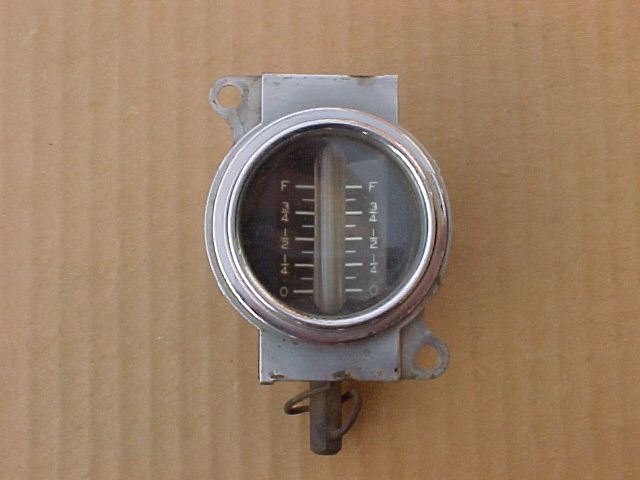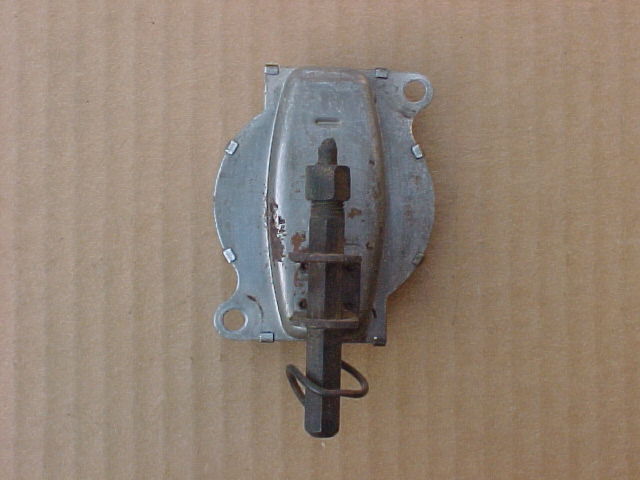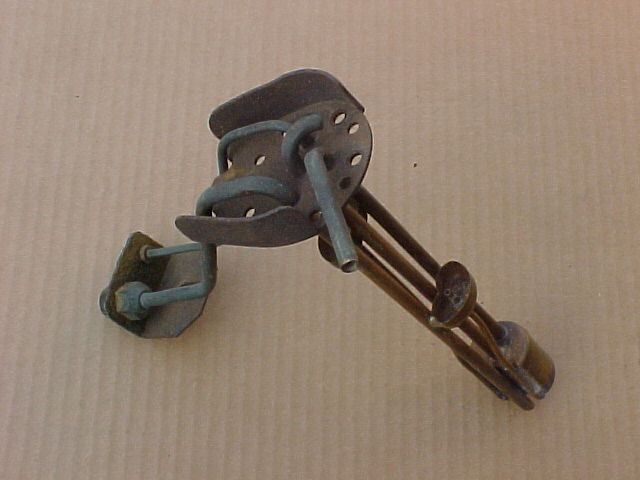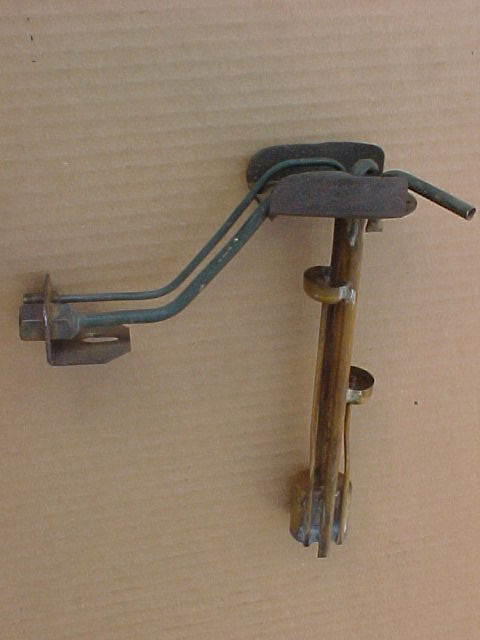Model B
Model A Ford Garage
Hydrostatic Fuel Gauge & Sender

 fordgarage.com
fordgarage.comThe pic above shows an original 1932 hydrostatic fuel gauge. This system is a variation on a U tube manometer, and uses a sender in the tank to transmit an air pressure through a line to the gauge, which moves the fluid up and down in the glass sight tube.
The operation is very accurate and reliable when properly installed and calibrated. Ford used this type of system through 1935. In 1936 Ford changed to electric fuel level senders.

 fordgarage.com
fordgarage.comAbove is the back side of the gauge showing the air line connection. The line is mated to the glass tube which is filled to a certain level with a red indicator fluid of a particular specific gravity.
The indicator fluid is acetylene tetrabromide (1,1,2,2-tetrabromoethane) which is very stable and mostly non-evaporative. It is corrosive however, and most gauges are rusted out at the top where the vapors deposited on the steel stamping.
This gauge system was designed by King-Seeley, and was also used in a number of more expensive make cars of that era.

 fordgarage.com
fordgarage.comThe pic above shows the tank mounted sender. The assembly consists of the fuel level sender, the fuel supply line to the fuel pump and carburetor, and the fuel tank vent.
The sender has two cups at varying heights which catch splashed fuel while driving. As the fuel drains down the tubes, it pushes air ahead of it and replenishes a trapped air bell at the bottom of the sender unit.
Any excess air escapes under the bottom edge of the bell and rises to the top of the fuel tank as an escaping air bubble.
The constant volume of air which is trapped under the bell exerts a pressure in the air line to the gauge, which is proportional to the 'head pressure' of the fuel displaced by the air under the bell.
The air pressure trapped under the bell is directly related to the level of fuel in the tank. Thus the varying air line pressure reads out directly by moving the indicator fluid up or down in the gauge and reading out directly against the scale around the tube.

 fordgarage.com
fordgarage.comAnother view of the tank sender unit. The small line fitting is for the gauge air line. The large fitting is the fuel supply line to the fuel pump. These systems work very well when properly set up.
I have had mine working in my Model B Fordor since July 1998 and have only added a drop of indicator fluid once in that time.
The system must be clean, and the air line and fittings must be absolutely free of air leaks or obstructions. Either condition will prevent the system from working properly.
More related information on Ford Garage:
- For more Model A & B related information, use the Site Search box at the top or bottom of this page.
Vince Falter
February 2004

